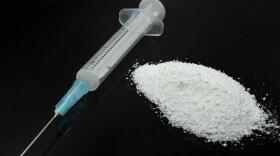Narcan, the medication that can offset the effects of opiates and revive overdose victims, is widely carried by area police, fire and EMT personnel. But, with winter coming on, first-responders are having to learn more about the drug and how to handle it.
Heat is the issue. Too much or two little can ruin Narcan, also knowns as naloxone. So, emergency-response units are being trained in how to keep it ‘temperature-secure’ in cruisers, trucks and ambulances on blazing days or freezing nights.
Bill Holland of the Summit County Sheriff’s Department says learning to deal with such things is just part of the expanding responsibility of safety forces.
“I run our police academy, and I tell our cadets, 'The job you get hired on today is not the same job you’re going to retire from in 25 years. It’s going to change.’ And this carrying Narcan in the cruisers is no different. No one would have thought of this 10 years ago. And here we are, coming up with plans to carry and administer this drug. You know, you just have to change with the times and change the way you operate.”
Narcan is typically used as a stop-gap to keep overdose patients alive until they reach a hospital.






